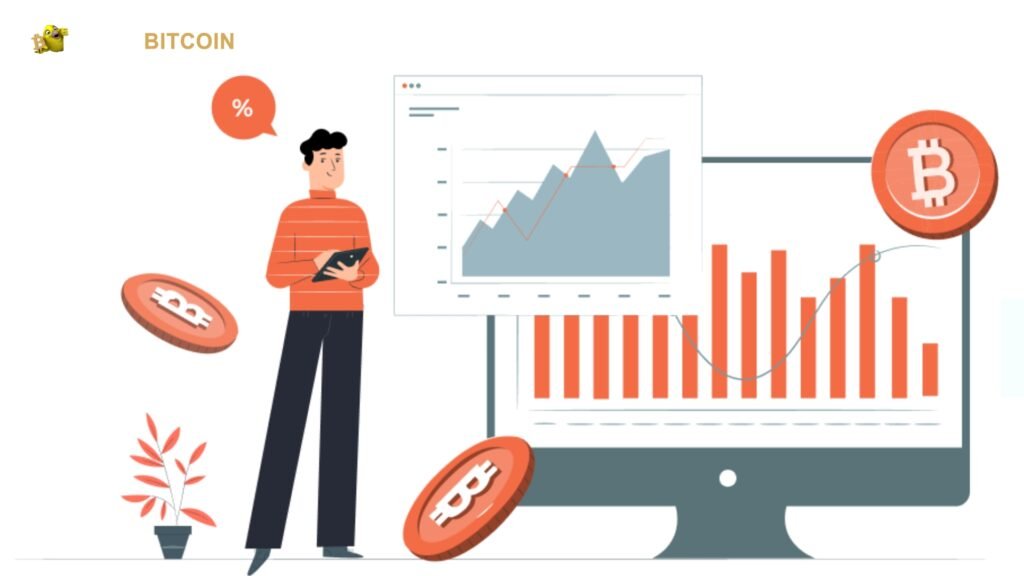Bitcoin Future Price Analysis: There have been significant price swings for Bitcoin since its launch in 2009, making it the most prominent cryptocurrency in the world. Thanks to an unprecedented surge in adoption and investor interest, Bitcoin has solidified its position as a major actor in the global financial scene. The future of Bitcoin’s price depends on several things, including technological advancements and macroeconomic trends. The present situation of Bitcoin, important factors influencing its future price, potential risks, and future predictions will all be covered in this analysis.
Current State of Bitcoin: A Snapshot
With a market valuation of over $500 billion in 2024, Bitcoin is still the most valuable cryptocurrency. Bitcoin is still the most popular cryptocurrency among individual and institutional investors, even though other digital currencies and blockchain initiatives are on the horizon. Because of how unpredictable it is, its price has gone through huge spikes and sharp drops.
Market demand, investor mood, regulatory news, and technology advancements are some variables that impact Bitcoin’s price. While it peaked at about $69,000 in November 2021, Bitcoin is now selling at $25,000 to $30,000. Perhaps another price move, either up or down, is in the works, and this consolidation phase is just setting the stage.
Key Drivers for Bitcoin’s Future Price
Institutional Adoption and Interest
Institutional adoption is a key component in determining the future value of Bitcoin. Bitcoin has been more interwoven into the ecosystems of several organizations in recent years. These include PayPal, Tesla, and MicroStrategy. A more convenient alternative for investors to obtain exposure to Bitcoin without owning it was introduced in 2023 when major financial organizations such as BlackRock and Fidelity started issuing Bitcoin exchange-traded funds (ETFs).
Bitcoin gains some credibility from institutional investors, which might cause its price to rise even more. If sovereign wealth, hedge funds, and large corporations buy Bitcoin, its price may soar. A surge in demand from wealthy institutional investors can lead to a shortage of Bitcoins, as there is a finite amount of 21 million coins.
Regulatory Developments
Regulation remains one of the most critical factors for Bitcoin’s future. While some governments, such as El Salvador, have embraced Bitcoin as legal tender, other nations are introducing tighter restrictions. In the United States, the Securities and Exchange Commission (SEC) has scrutinized Bitcoin-related products and services, leading to uncertainty in the market.
However, clearer regulatory frameworks could be a bullish sign for Bitcoin. Countries that adopt crypto-friendly regulations may become global hubs for Bitcoin trading and mining, fostering innovation and investment. Conversely, negative regulations—such as outright bans or heavy taxes—could suppress price growth in the short term.
Halving Events
Bitcoin follows a unique protocol called halving, where the block reward for miners is cut in half approximately every four years. Historically, Bitcoin halvings have preceded significant price increases due to a reduction in the new supply of Bitcoin entering circulation.
The next Bitcoin halving is expected in 2024, reducing the reward from 6.25 to 3.125 BTC per block. Given past halving events in 2012, 2016, and 2020, each of which preceded price surges, many analysts are optimistic that the 2024 halving will catalyze another bull run.
Macroeconomic Factors
Bitcoin’s price doesn’t operate in a vacuum. Broader economic conditions—such as inflation rates, monetary policy, and global financial stability—play a significant role in Bitcoin’s price movement. In recent years, Bitcoin has been seen as a hedge against inflation and currency devaluation, especially in economies experiencing hyperinflation or financial instability.
For instance, during times of economic crisis, such as the COVID-19 pandemic, Bitcoin experienced significant inflows as traditional assets underperformed. If inflation persists or central banks continue to print money to stimulate economies, Bitcoin may benefit as a “store of value” asset, attracting investors seeking to preserve their wealth.
Risks to Consider
Volatility and Market Cycles
Bitcoin is notorious for its price volatility. While this presents opportunities for traders, it poses risks for long-term investors. Bitcoin’s previous bull cycles have been followed by steep corrections, sometimes wiping out as much as 80% of its value. Understanding these market cycles is crucial for managing expectations.
For example, after reaching its all-time high of $69,000 in 2021, Bitcoin’s price dropped by over 50% by mid-2022. Investors must be prepared for these sharp declines, especially if they use leverage or rely on short-term gains. It is difficult to predict when the next correction will occur, making it crucial to approach Bitcoin investment cautiously.
Environmental Concerns
Another potential risk to Bitcoin’s future price is the environmental impact of its mining process. Bitcoin mining requires significant computational power, resulting in high energy consumption. Critics argue that Bitcoin mining contributes to carbon emissions, particularly in countries that rely on fossil fuels for energy.
While some mining operations are transitioning to renewable energy, concerns about Bitcoin’s environmental impact could lead to increased regulatory scrutiny or even restrictions on mining in certain regions. If environmental regulations tighten, Bitcoin’s price could be affected by reduced mining activity or increased costs for miners.
Technological Risks
Although Bitcoin is the most secure and decentralized cryptocurrency, it’s not without technical risks. Bitcoin’s blockchain faces challenges related to scalability and transaction speed. As the network grows, it must be able to handle more transactions without increasing fees or slowing down.
Layer-2 solutions, like the Lightning Network, aim to solve these scalability issues, but widespread adoption has been slow. If these solutions don’t gain traction, Bitcoin could face competition from faster, more scalable blockchains, potentially affecting its market share and price.
Future Price Predictions
Given the number of variables involved, predicting Bitcoin’s future price is speculative. However, several models have been used to project its price trajectory, with one of the most popular being the Stock-to-Flow (S2F) model. This model measures the scarcity of Bitcoin (stock) against the rate of new supply (flow), suggesting that its price should increase as Bitcoin becomes scarcer due to halvings.
According to the S2F model, Bitcoin could reach anywhere from $100,000 to $500,000 in the next few years, particularly if institutional demand continues to grow. However, the model has faced criticism for oversimplifying Bitcoin’s price dynamics and not accounting for macroeconomic factors or regulatory risks.
On a more conservative note, some analysts believe that Bitcoin will continue to trade in a range of $30,000 to $50,000 over the next few years as it matures as an asset class. Much depends on how the next halving event and broader economic conditions unfold.
Conclusion
The future of Bitcoin’s price is uncertain, but several key factors will shape its trajectory in the coming years. Institutional adoption, regulatory developments, macroeconomic conditions, and Bitcoin’s halving events will all play a role in determining whether Bitcoin can reach new all-time highs or face further corrections.
For investors, understanding the risks and drivers behind Bitcoin’s price movements is crucial for making informed decisions. Bitcoin is still a high-risk, high-reward asset, but its growth potential is great as it gains general adoption. However, as with all investments, it’s essential to approach Bitcoin cautiously, keeping an eye on market cycles, regulatory developments, and broader economic conditions.

